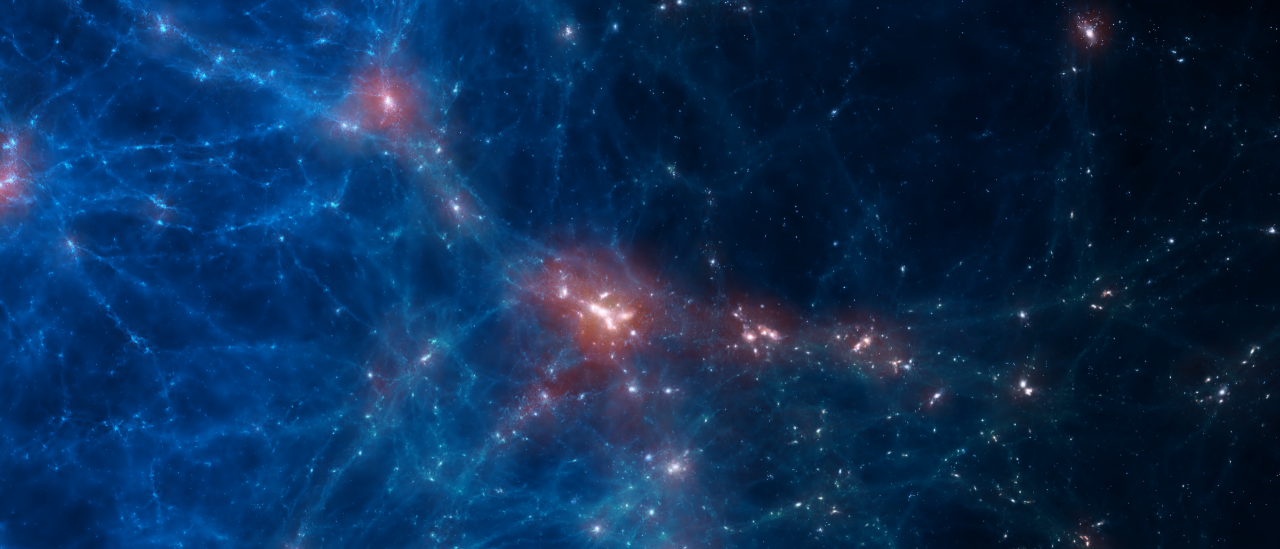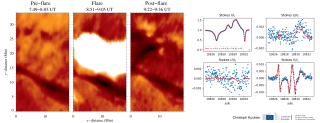General
How galaxies formed and evolved through cosmic time is one of the key questions of modern astronomy and astrophysics. Cosmological time- and length-scales are so large that the evolution of individual galaxies cannot be directly observed. Only through numerical simulations can one follow the emergence of cosmic structures within the current cosmological paradigm.
The main physical processes in galaxy formation and evolution are gravity, hydrodynamics, gas cooling, star formation, stellar evolution, supernova (SN) and black hole (BH) feedback. These are highly non-linear, thus difficult to describe with analytic models. Moreover, the presence of baryonic matter induces biases that collisionless (“dark matter”) simulations alone cannot reproduce (e.g. van Daalen et al. 2014, MNRAS, 440, 2997; Velliscig et al. 2014, MNRAS, 442, 2641). Semi-analytic models based on these simulations require ad hoc corrections to account for these biases. Hydrodynamic, cosmological simulations are therefore the preferred tool for conducting “controlled experiments” of galaxy formation and evolution.
After three decades of advances in numerical simulations, theorists have only recently been able to reproduce simultaneously the observed properties of the present day galaxy population and the inter-galactic medium (e.g. EAGLE, Schaye et al. 2015, MNRAS, 446, 521; ILLUSTRIS, Vogelsberger et al., 2014, Nature, 509, 177). In particular, the luminosity and mass function of galaxies, the galaxy size- and metallicity-mass relations, and many other properties are now reproduced over a large range of galaxy stellar masses.
The group of numerical astrophysics work on a variety of scientific topics related to the evolution of galaxies and the large-scale structure of the universe. The expertise ranges from the internal structure of dwarf and low surface brightness galaxies, the Milky Way and its satellite galaxies, the study of galaxies in groups and clusters, to large, cosmological simulations of the structure of the universe. The group collaborates with most of the IAC research groups working on extragalactic astrophysics and cosmology.
Members
Results
EDGE/C-EAGLE With the completion of the main sample of simulations, the post-processing phase has been started. Dalla Vecchia developed an analysis program to compute luminosities of SSPs and magnitudes of galaxies of ~30 resimulated clusters. The code makes use of the stellar spectra library EMILES, developed at the IAC and recently extended to cover a larger wavelength range. EUCLID Within the EUCLID collaboration, a total of 300 cosmological, N-body simulations of a volume representative of the observed universe were performed. The same sample of initial conditions was evolved with different techniques by other members of the collaboration. The comparison of the different techniques will allow to assess their accuracy in the estimation of the covariance matrix, thus the errors in the measurements from large-scale structure surveys. GALAXY INTERACTIONS IN CLUSTERS For several decades, it has been known that stellar bars in disc galaxies can be triggered by interactions, or by internal processes such as dynamical instabilities. Martínez-Valpuesta et al. (2017) explore the differences between these two mechanisms using numerical simulations. They used two groups of simulations based on isolated galaxies, one group in which a bar develops naturally, and another group in which the bar could not develop in isolation. The rest of the simulations recreate 1:1 coplanar fly-by interactions computed with the impulse approximation. Compared with equivalent isolated galaxies, they find that bars affected or triggered by interactions: (i) remain in the slow regime for longer, (ii) are boxier in face-on views and (iii) they host kinematically hotter discs. Within this set of simulations, strong differences between retrograde or prograde fly-bys are not seen. They also show that slow interactions can trigger bar formation.



